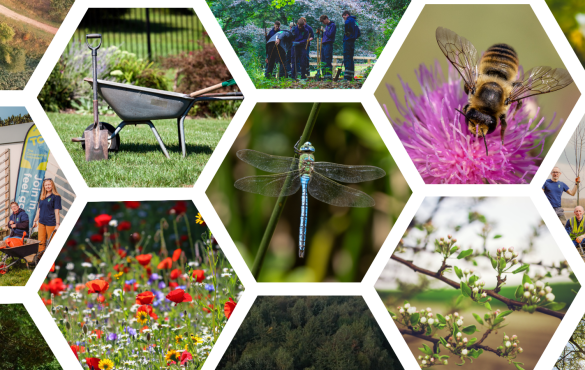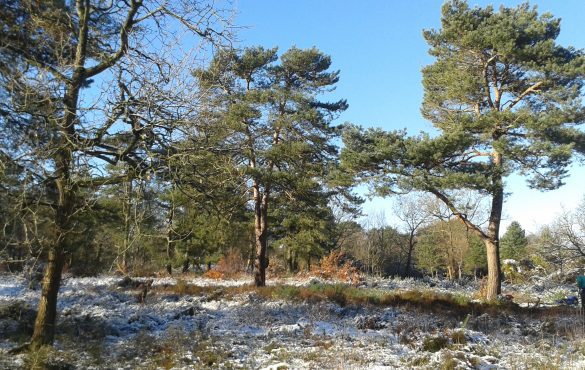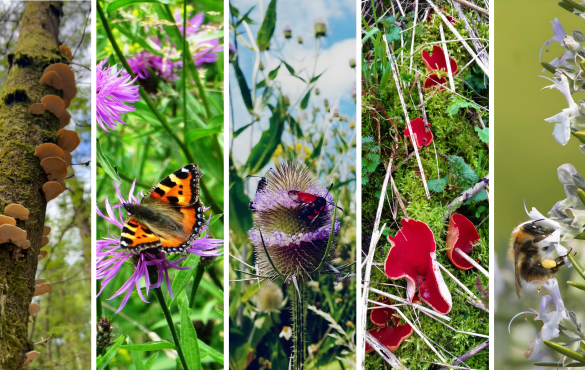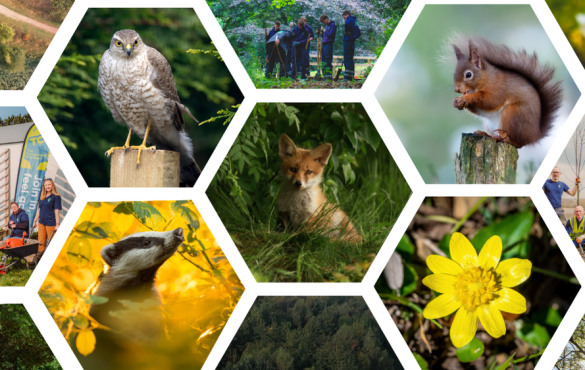It is a well-known fact that at The Conservation Volunteers, we are committed to caring for and protecting our local green spaces to create happy and healthy communities across the UK.
Green spaces provide communities with places to connect with nature and the positive benefits on people’s physical and mental health from spending time in nature are plentiful.
However, it is not just parks and green spaces that we care for; blue spaces are as important and need as much care and attention.
Ponds provide homes for a huge number of species: plants and fungi, fish, birds, invertebrates, amphibians and even mammals. This blue space also has a positive impact on our mental health, much in the same way that green space can.
With generous funding from The National Lottery Heritage Fund, TCV Croydon Ponds Project worked with volunteers, community groups, ecologists, and historians to reinvigorate the public profile of the 40+ ponds in the London Borough of Croydon.
Naturally occurring ponds have been part of our landscape for millions of years, and man-made ponds for millennia. Much of our native wildlife has come to depend on them for a source of fresh water.
With increases in intensive agriculture and urbanisation, there has been a marked decrease in our number of ponds across the UK over the last few centuries, making it more important now than ever to protect these havens for wildlife.
We take a look at the work that goes into preserving blue spaces, and why this work is so vital.
Protecting the Wildlife
Ponds are home to a plethora of species, therefore not every pond is the same and requires various conservation methods to ensure that the correct measures are taken to improve and protect them.
Sometimes this can mean dredging silt from a pond or extending its margins, but managing ponds for wildlife is not always about actively working in and around the pond.
Surveying the wildlife and carefully selecting ways to help encourage it is often more beneficial than any major disruption to the pond itself.
This can take the form of removing invasive species or building ‘hibernaculum’ nearby – a pile of stones, wood and mud – which can be used by amphibians visiting the pond.
Ecological Surveys
The species of plant and animals that are living in the green spaces surrounding ponds is an important way to inform how they should be managed.
During the summers of 2018 and 2019, TCV volunteers surveyed 42 public ponds across Croydon recording the plants both in the ponds and around the water’s edge, as well ‘pond dipping’ to find out what animals were living in the water.
The last surveys had been taken in 1994, therefore the information needed updating if these ponds were going to be given the opportunity to flourish.
It appears that comparing the 1994 and 2019/20 surveys that the ponds that have received management work from TCV and other community groups have improved their species count.
Whilst there have been some that have declined, the reasons for this are unclear. Further habitat management work that has been undertaken through the Croydon Ponds Project and continued improvement work will help these ponds to improve over time.
Invasive Species
Invasive species are non-native plants brought into the UK in the last few centuries that can outcompete our native pond life.
While measures are taken to avoid their spread, pond owners, gardeners and anglers can unwittingly assist in their spread by carrying tiny fragments of the plants on their equipment, shoes or clothing, or by emptying fish tanks or plant holders into wild ponds.
During surveying the ponds, volunteers used the following advice to avoid spreading any invasive plants:
- Check your equipment and clothing for living organisms
- Clean and wash all equipment, footwear and clothing
- Dry all equipment and clothing – some species can live for many days in moist conditions.
TCV Croydon produced an overview of the project, including historical information about the ponds involved in the project, which can be found here.
A write up for the surveys conducted in 2018 and 2019 can be found here, alongside the full dataset from the surveys.




